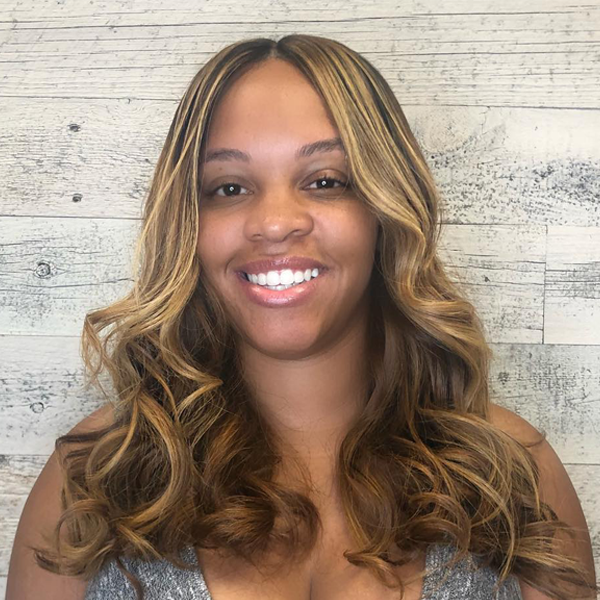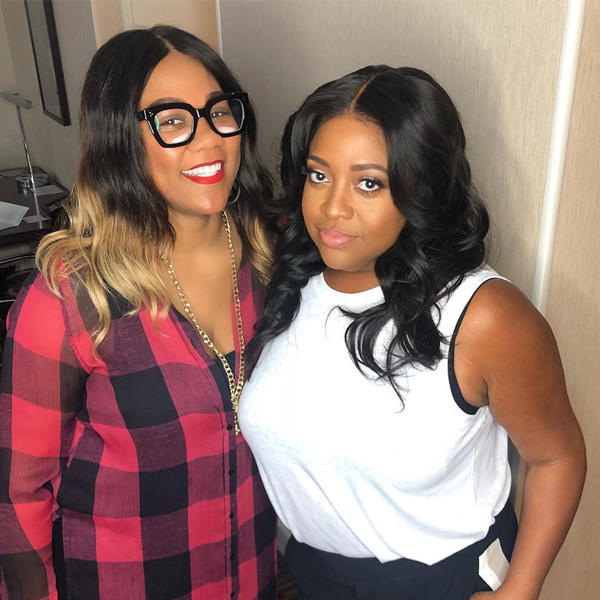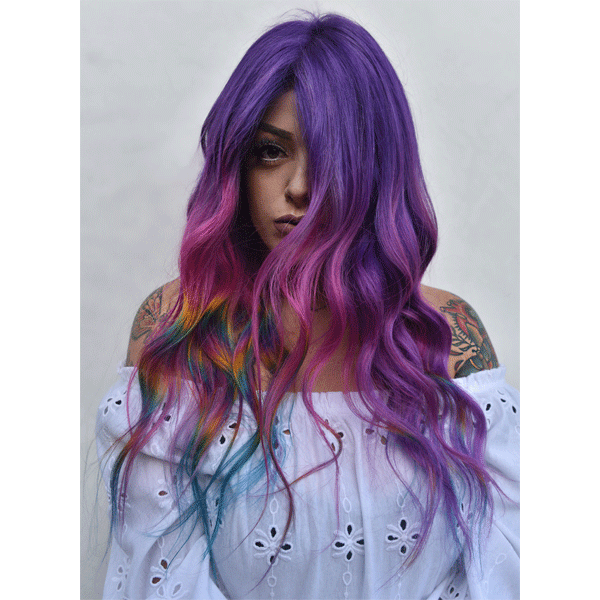Wigs 101: U-Part, Lace Front + Closure—How To Choose The Right One!
Here’s The Difference Between A Closure, U-Part Or Lace Frontal Wig
Sam Villa Ambassador Jada Jenkins (@jadajenkinsco) can make a custom wig for a client in 45 minutes. 🤯 So it’s safe to say, she’s the perfect stylist to break down the most popular wigs on the market and which works best for your clients. Scroll down to get her advice below, plus beginner tips on how to measure the head and pricing for any stylist just starting out in the wig game.
Look At How Natural This Custom Unit Looks On Jada’s Client!
View this post on Instagram
Wig Types
Closure Wig
- Closure units feature lace only in a small portion of the wig, so there aren’t a lot of parting options or versatility. A great way to make the wig look more natural is to leave a small portion of hair out in the front, while braiding down the rest in horizontal corn rows on both sides of the head.
- Lay the wig on the client’s head, then determine where the part is. Follow the part and blend natural hair into the wig using a flat iron for a seamless blend.

U-Part Wig
- The u-part wig allows for a large portion of the hair to be left out for a natural look. It’s perfect for clients who need to be eased into wig life or don’t feel like dealing with lace. It’s called a u-part, because of the u-shape the wig makes and the u-section of hair left out to blend with the wig.
- Hair is braided down in five or more large plaits following the shape of the head, with a u-section of hair left in the front. The wig can be secured with combs or sewn in place using a needle and thread following the u-shape. Once secure, natural hair from the u-section is parted over to cover wig and blended in.
Pro Tip: If a client has fine hair, make the u-part into more of a narrow, triangle shape when securing in place. If the client’s hair is thick or coarse, do a classic u-part instead.
Lace Frontal Wig
- Lace frontal wigs are more versatile than closure wigs, because the lace stretches from ear to ear so the client has unlimited parting options.
- Natural hair should be braided into thin corn rows going straight back. When applying the unit, cut the lace following the client’s head to detail the lace to their hairline. The lace used should always match the client’s skin tone.
Have A Client Who Wants To Cover Grays, But Doesn’t Want To Dye Their Hair? Tell Them To Get A Wig!
View this post on Instagram
Don’t Wash Too Often
Human hair wigs can last years if properly taken care of. Advise your clients not to wash their units too often to prevent wear and tear. Jada recommends cleansing no more than every three weeks.
A great way to get your clients to come see you more often, would be to offer to wash and restyle their wigs for them. If you don’t know where to start when it comes to cleansing human hair wigs, click here to check out our “Wig Washing 101” article for a tutorial.

Measure The Head To Determine The Wig Cap Size
If you’re making a wig for yourself or a client, one of the first things you need to do is measure the head size. This helps determine what size cap needs to be used for the wig to sit in. Here’s how to do it:
- Use measuring tape to measure the head, starting at the middle of the forehead and all the way around until the tape meets.
- Any number between 19 and 21½-inches is a small, 22-inches is a medium and anything over is considered a large.
Bonus Tip: How To Charge
If you’re new to making custom units, Jada recommends charging around the average wig prices in your area to start with. Once you’ve established yourself, then you can up your rate.
Pro Tip: To accommodate different clientele, Jada works with three different vendors so she can provide three different price points for her wigs. The higher the price point, the higher the quality of hair used.
Watch The Full Wig Breakdown Here!
View this post on Instagram
Want More Wig Education? Check Out This Article On 3 Things To Know Before Buying A Wig!
More from
Sam Villa
-
Product Launches
8 NEW Products To Add To Your Station
-
New Appointments
The Sam Villa® Company Announces New Leadership Promotions
-
Product Launches
Our Editors Picked THESE Must-Try Fall Hair Products
-
Haircuts
Midlength Shag Haircut
-
Industry Events
Sam Villa & The Beyond Project Partner with the Salvation Army’s SEEDS of Hope
-
Balayage
Foil & Open Air Highlight Placement
-
Braids
Braided Boho Downstyle
-
Texturizing Irons
Signature Series Textur® Professional Texturizing Iron
-
Curling Irons/Rods
Signature Series Professional Curling Iron
-
Manufacturer
Sam Villa Appoints New Vice President, Strategic Marketing
-
Dry-Cutting
WATCH: Sam Villa’s Dry-Cutting Fringe Technique
-
Bobs
Twist-Cutting Bob Technique
-
Blow Dryers
8 Product Discoveries at America’s Beauty Show 2017
-
News
BREAKING NEWS: Finalists Announced for the 2016 Stylist Choice Awards!
-
Haircuts
Hot Tip: Creating Volume with a Razor
-
Haircuts
WATCH: Texturizing and Adding Movement to Dense Hair Using a Razor
-
News
BREAKING NEWS: Finalists Announced for the 2015 Stylist Choice Awards!










